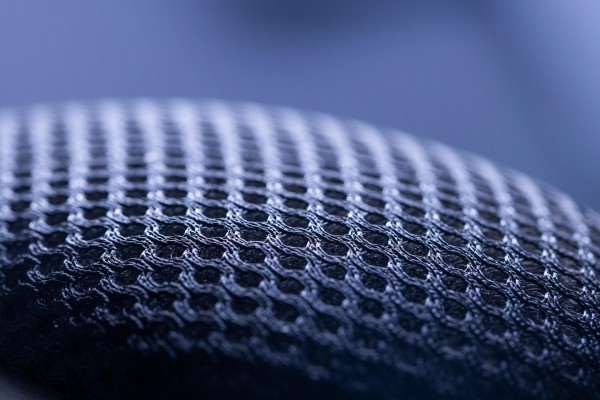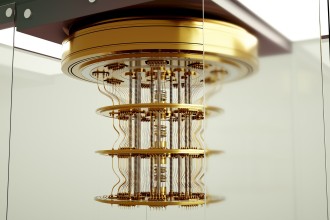-
-
2.1.Healthcare:
-
2.2.Sports and Fitness:
-
-
-
3.2.Challenges:
-
6.Conclusion:
What are Smart Textiles?
Smart textiles, also known as e-textiles or electronic textiles, refer to fabrics and materials that have been enhanced with the integration of electronics, sensors, and conductive materials. These advancements enable smart textiles to go beyond the traditional functionality of fabrics and offer unique capabilities.
Unlike traditional textiles that solely serve as passive materials for clothing and home decor, smart textiles possess interactive and responsive properties. They can sense, react, and adapt to various stimuli, making them dynamic and versatile.
Integrating electronics into smart textiles involves incorporating components such as microcontrollers, sensors, actuators, and power sources. These electronic elements are seamlessly integrated into the fabric structure, allowing for a harmonious fusion of technology and textiles.
Sensors embedded in smart textiles can detect and measure parameters such as temperature, pressure, humidity, motion, and biometric data. This data can be collected and transmitted for further analysis and interpretation. By capturing and processing real-time information, smart textiles enable a wide range of applications in industries such as healthcare, sports, fashion, and home design.
Conductive materials, such as conductive threads or fibers, are used to create pathways for electrical signals within the fabric. These conductive elements allow for the transmission of power and data throughout the textile, enabling communication between different components and functionalities.
What sets smart textiles apart from traditional textiles is their ability to interact with the wearer, the environment, or other external devices. They can respond to stimuli by changing color, shape, or texture, provide feedback through haptic or visual cues, or even communicate wirelessly with other devices. This interactivity and adaptability make smart textiles highly versatile and capable of enhancing user experiences in various domains.
While traditional textiles primarily provide comfort, protection, and aesthetics, smart textiles expand these functionalities by adding intelligence, connectivity, and enhanced performance. They bridge the gap between the digital and physical worlds, opening up a wide range of possibilities for innovation and creating new opportunities for integration of technology into everyday fabrics.
In summary, smart textiles combine the functional and aesthetic aspects of traditional textiles with the integration of electronics, sensors, and conductive materials. They possess unique characteristics that allow them to sense, react, and adapt to stimuli, making them highly versatile and capable of transforming multiple industries.
Applications and Industries of Smart Textiles:
Healthcare:
Smart textiles have made significant advancements in the healthcare industry, offering a range of benefits for both patients and healthcare professionals. Here are some notable applications:
- Monitoring Vital Signs: Smart textiles embedded with sensors can continuously monitor a patient's vital signs, such as heart rate, respiration, and body temperature. This real-time data collection enables healthcare providers to track patient health remotely and detect any abnormalities promptly.
- Assisting in Rehabilitation: Smart textiles can aid in the rehabilitation process by providing feedback and assistance. For example, smart garments with haptic feedback can guide patients through proper movement and posture, enhancing the effectiveness of physical therapy.
- Improving Patient Comfort: Textiles with temperature-regulating properties, such as phase-change materials or embedded heating elements, can optimize patient comfort by adapting to individual needs. Smart fabrics can also prevent pressure ulcers by monitoring pressure distribution and providing timely alerts.
Sports and Fitness:
Smart textiles have found numerous applications in sports and fitness, revolutionizing performance monitoring, injury prevention, and personalized training. Some key applications include:
- Enhancing Performance: Smart garments with embedded sensors can track an athlete's movements, providing valuable data on technique, balance, and posture. This information helps athletes optimize their performance and avoid injuries.
- Tracking Biometrics: Smart textiles can monitor biometric data, such as heart rate, oxygen saturation, and breathing rate, during physical activities. Athletes can use this information to adjust their training intensity, optimize recovery, and prevent overexertion.
- Preventing Injuries: Smart textiles equipped with impact sensors can detect and analyze the force of impacts during sports activities. This information helps identify potentially harmful impacts and provides insights for injury prevention and equipment design improvements.
Fashion and Wearables:
Smart textiles are transforming the fashion industry by blending technology seamlessly with style. Here are some exciting applications:
- Customizable Garments: Smart textiles allow for personalized clothing experiences. They can change color, pattern, or shape based on user preferences, environmental conditions, or external stimuli. This customization offers new opportunities for self-expression and fashion design.
- Interactive Fashion Shows: Smart textiles enable interactive and immersive fashion shows by integrating lighting, sound, and motion elements into garments. These captivating displays engage audiences and showcase the potential of technology in fashion.
- Wearable Tech: Smart textiles are the foundation of wearable technology, such as smartwatches, fitness trackers, and smart glasses. By embedding sensors, communication modules, and displays into fabrics, wearable tech provides functionalities like activity tracking, notifications, and augmented reality experiences.
Home and Interior Design:
Smart textiles are making homes smarter, more comfortable, and energy-efficient. They find applications in various aspects of home and interior design, including:
- Smart Upholstery: Textiles integrated with sensors and actuators can adapt to users' sitting or lying positions, providing personalized comfort. Smart upholstery can also adjust to environmental conditions, such as temperature or humidity, for enhanced well-being.
- Energy-Efficient Curtains: Smart textiles with light-responsive properties can automatically adjust the transparency or reflectiveness of curtains based on daylight intensity. This feature optimizes natural light usage and helps regulate room temperature, leading to energy savings.
- Ambient Lighting Textiles: Textiles with embedded LED lights or light-guiding fibers offer creative lighting solutions. These textiles can provide ambient lighting effects, illuminate specific areas, or change color to enhance the overall atmosphere and aesthetics of a space.
Military and Defense:
Smart textiles play a vital role in military and defense applications, providing functionalities that enhance safety, communication, and stealth capabilities. Here are a few key applications:
- Protective Gear: Smart textiles can be integrated into military uniforms and protective gear to enhance comfort, durability, and functionality. For example, textiles with flame-resistant propertiescan protect soldiers from heat and fire hazards, while ballistic-resistant fabrics provide additional protection against projectiles.
- Camouflage: Smart textiles with adaptive camouflage properties can change color or pattern to match the surrounding environment. This technology improves the effectiveness of military personnel in concealing their presence and enhances their stealth capabilities.
- Communication Textiles: Smart textiles can incorporate communication systems, such as antennas and conductive fibers, enabling seamless and secure communication between soldiers or military units. This integration reduces the need for additional communication equipment and enhances operational efficiency.
- Sensor Integration: Smart textiles can be equipped with sensors to detect environmental conditions, such as temperature, humidity, or chemical agents. These textiles provide real-time data, enhancing situational awareness and aiding in decision-making on the battlefield.
- Body Monitoring: Smart textiles can monitor soldiers' physiological parameters, such as heart rate, body temperature, and fatigue levels. This data helps assess their physical well-being, optimize performance, and prevent overexertion.
Smart textiles continue to advance, presenting opportunities for innovation across various industries. The applications mentioned above are just a glimpse of the vast potential of smart textiles in healthcare, sports, fashion, home design, and military sectors. As technology evolves and further breakthroughs occur, we can anticipate even more exciting applications and benefits in the future.
With their ability to seamlessly integrate technology into fabrics, smart textiles are transforming our everyday lives, bridging the gap between functionality and fashion. The future holds tremendous potential for smart textiles, and we are only beginning to scratch the surface of what they can offer. As researchers, designers, and engineers push the boundaries of innovation, we can look forward to a world where textiles are not just passive materials, but dynamic and intelligent companions that enhance our experiences, well-being, and capabilities
Advantages and Challenges of Smart Textiles:
Benefits of Smart Textiles:
The integration of technology into textiles offers numerous advantages, revolutionizing various industries. Here are some key benefits of smart textiles:
- Enhanced Functionality: Smart textiles add functionality to traditional fabrics, enabling features such as sensing, actuation, and communication. They can monitor vital signs, track movements, adjust to environmental conditions, or provide haptic feedback, expanding the capabilities of textiles beyond their traditional roles.
- Improved Comfort: Smart textiles can enhance comfort by adapting to the wearer's needs and preferences. They can regulate temperature, manage moisture, or provide support and compression where needed. This personalized comfort experience adds value to clothing, especially in sectors like healthcare and sports.
- Personalized Experiences: Smart textiles allow for customization and personalization, catering to individual preferences and requirements. Whether it's changing colors or patterns, adjusting fit and support, or integrating wearable technology, smart textiles enable users to tailor their clothing to their unique preferences.
- Integration with Existing Systems: Smart textiles can seamlessly integrate with existing technologies and systems. For example, they can interface with smartphones, fitness trackers, or smart home devices, allowing for interconnected experiences and data sharing.
Challenges:
While smart textiles offer exciting possibilities, there are several challenges that need to be addressed for widespread adoption and commercial viability:
Power Management: Powering smart textiles and ensuring long-lasting operation remains a challenge. Embedded electronics require a stable power source, and balancing functionality with energy efficiency is crucial. Researchers are exploring various solutions, including energy harvesting from body movements or ambient sources, as well as efficient energy storage systems.
Scalability: Scaling up production of smart textiles without compromising quality or increasing costs is a challenge. Manufacturers need to develop scalable manufacturing processes, efficient integration methods, and reliable quality control measures to meet the demands of mass production.
Cost: The cost of developing and producing smart textiles can be higher compared to traditional textiles. The integration of electronics, sensors, and specialized materials adds to the production expenses. However, as technology advances and economies of scale come into play, the cost is expected to decrease, making smart textiles more accessible.
Design Constraints: Integrating technology into textiles often presents design constraints. Flexibility, washability, and durability are crucial factors to consider. Smart textiles should be comfortable, able to withstand washing and everyday wear, and maintain their functionality over time. Innovations in material science and manufacturing techniques are addressing these challenges to create robust and user-friendly smart textiles.
Despite these challenges, ongoing research and development efforts are driving advancements in the field of smart textiles. As technology improves and costs decrease, smart textiles are becoming more practical and commercially viable, offering a wide range of benefits to individuals and industries alike. The continued collaboration between textile experts, engineers, and technology innovators will play a vital role in overcoming these challenges and unlocking the full potential of smart textiles.
Future Trends and Possibilities:
- Stretchable and Flexible Electronics: Researchers are developing stretchable and flexible electronics to overcome the limitations of rigid components in smart textiles. These advancements involve the use of innovative materials and fabrication techniques, allowing electronics to conform to the body's movements and increase overall comfort and wearability.
- Nanotechnology: Nanofibers and nanocoatings are being integrated into smart textiles to enhance their performance. Nanofibers offer unique properties such as high strength, breathability, and moisture-wicking capabilities. Nanocoatings can provide functionalities like water and stain resistance, antimicrobial properties, and improved durability.
- Internet of Things (IoT) Integration: Smart textiles are increasingly being connected to the Internet of Things, enabling seamless interaction with other devices and systems. This integration allows for real-time data exchange, remote control, and synchronization with various IoT-enabled platforms. For example, smart clothing could adjust temperature settings based on weather forecasts or communicate biometric data to healthcare providers.
- Sustainability: The sustainability of smart textiles is a growing concern. Researchers and manufacturers are exploring eco-friendly production methods, including the use of recycled materials, bio-based fibers, and less resource-intensive manufacturing processes. Additionally, efforts are being made to develop recyclable or biodegradable smart textile components to minimize environmental impact.
Ethical Considerations:
Privacy and Data Security: With the collection of personal data through smart textiles, ensuring privacy and data security is of utmost importance. Strict protocols must be in place to protect user data, including encryption, secure data storage, and user consent for data usage and sharing. Transparent communication with users regarding data collection and its purpose is essential.
Environmental Impact: As with any technology, the environmental impact of smart textiles must be carefully considered. This includes reducing energy consumption during manufacturing, minimizing waste generation, and developing end-of-life recycling or disposal solutions for smart textile components. Striking a balance between technological advancements and sustainability goals is crucial.
Ethical Fashion: Ethical considerations extend to fair labor practices and responsible sourcing in the production of smart textiles. Brands and manufacturers should prioritize the well-being of workers involved in the supply chain, ensuring fair wages and safe working conditions. Additionally, responsible sourcing of materials, such as considering the environmental and social impact of raw material extraction, is essential.
Conclusion:
Smart textiles represent a transformative force in the world of fashion, healthcare, sports, and beyond. With advancements in materials, electronics, and connectivity, the possibilities for smart textiles are expanding rapidly. As technology continues to evolve, it is crucial to address ethical considerations related to privacy, environmental impact, and ethical fashion practices.
By embracing innovation while keeping sustainability and ethical standards in mind, we can harness the full potential of smart textiles. This will enable us to create a future where clothing not only provides style and comfort but also integrates seamlessly with our daily lives, enhancing our experiences and well-being. As researchers, manufacturers, and consumers work together, we can shape a world where smart textiles contribute to a more connected, sustainable, and ethically conscious society.







